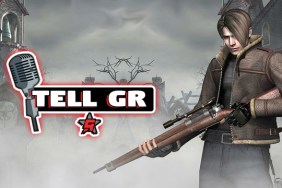Holding the fort.
War, as they say, is hell. Whether you’re a hippie peacenik chanting Kumbaya or a heartless killing machine just waiting for the next battle, everyone can agree that war is chaotic, frequently disgusting, and messy. Wouldn’t it be so much nicer if war was clean, neat, and organized? If you could ponder your next action thoughtfully, weighing all the alternatives before deciding how to proceed? If everyone politely waited their turns to attack and gracefully disappeared from the field when destroyed? If you think that war should be more like a bento box than a food fight, then Fire Emblem: Radiant Dawn is the game for you.
[image1]Like its predecessors in the series, Radiant Dawn is a tactical RPG set in a medieval fantasy universe. The story centers around The Dawn Brigade, a ragtag underground resistance group fighting for the people of Daein against the harsh rule of former neighbor and now occupier, Beignon. (Why do I imagine them as delicious Beignets? Nevermind, don’t answer that.) At any rate, the Dawn Brigade’s secret weapon against their drooling enemies is Micaiah, a mysterious silver-haired girl who can see the future and heal people with her bare hands. As Micaiah and her cohorts achieve strategic victories, word spreads of their exploits, and more allies join the cause.
The incredible amount of strategy involved in each battle of Radiant Dawn plays out like an elaborate chess game. You could spend hours planning out each move, and I mean that in the best possible way. Seriously. One of the great yet frustrating elements of combat is how little room there is for error. If any of your units die in battle, they’re dead. Forever. Like, for realsies. So while you might ordinarily be willing to sacrifice one or two units to gain a strategic advantage, that’s one or two units that you won’t have in the next battle, and that’s just not worth it.
As a result, you not only need to win but utterly dominate your opponent. Your team has to work together to take out enemies while still providing a line of defense solid enough to protect your weaker units. It’s complicated and can hurt your brain. There’s nothing more frustrating than spending forty-five minutes working through a tough battle, only to have a weak, little kamikaze archer you didn’t notice penetrate your defenses and fire a shot at Micaiah that kills her and ends your game. The battle save option can be a lifesaver here, but even so, you will likely hit the reset button often.
Radiant Dawn is also an excessively linear game. Particularly in the early levels before you have a base, you’ll plunge headlong from battle to battle, without even a chance to trade items or stock up on gear. It can be frustrating, but the linearity of the game works with the plot, a complex web of diplomacy and intrigue. As you jump from one battle to the next, you really feel like a member of an underground revolutionary group, constantly on the run from authorities.
[image2]I’m not sure if it’s the crisp animations, the distinct skills of each character class, the solid writing, or a combination of all three, but the storyline is very engaging and the characters are memorable. Though you end up controlling twenty or so different characters, with dozens more NPCs, it’s easy to keep track of who is who and what they can do – even if their names escape you. I once called a few “Fire shooting lady” and “Bow dude”.
The sound is generally good, although the high-intensity battle music can get a bit much when you’re spending more time thinking about your attack than actually attacking. The graphics are likewise decent, if a bit schizophrenic. The opening cutscene is beautiful, but that’s the last time you see any decent animations or hear any voice acting, for a long time. Instead, Radiant Dawn relies on map-view storytelling and animated talking heads to move the plot forward. It does the job, but it seems a bit cruel to taunt us with the beautiful graphics at the beginning, only to abandon them.
As far as the in-game graphics go, I wouldn’t call them beautiful, but they serve the game well. It’s generally clear at a glance what’s happening on the field, which is really all that you want. The fight animations are pretty, but have none of the FF-like pyrotechnics that would make you want to watch them again and again. I ended up turning them off after an hour or so just to make the battles move more quickly.
[image3]I was also a little underwhelmed at Nintendo’s usage of the Wii controller. Granted, this isn’t really the kind of game where you’d want to be swinging your Wii-mote around like a war hammer or anything, but it should be possible to direct units with the pointer. Without any new Wii-specific features, Radiant Dawn feels like a game I could have played on the Gamecube.
In spite of its weaknesses, Radiant Dawn delivers where it counts: Engaging characters, an interesting storyline, and above all, terrific strategic gameplay. You can get happily lost for hours in the game’s complicated systems for weapon benefits, support bonuses, and character biorhythms. And when it’s all laid out nicely on a neat little grid like that, the hell that is war actually seems fun.
-
Great strategy
-
No, really. GREAT strategy.
-
Memorable characters
-
Too easy to lose
-
Lackluster 2-D graphics
-
No special use of Wii-mote









